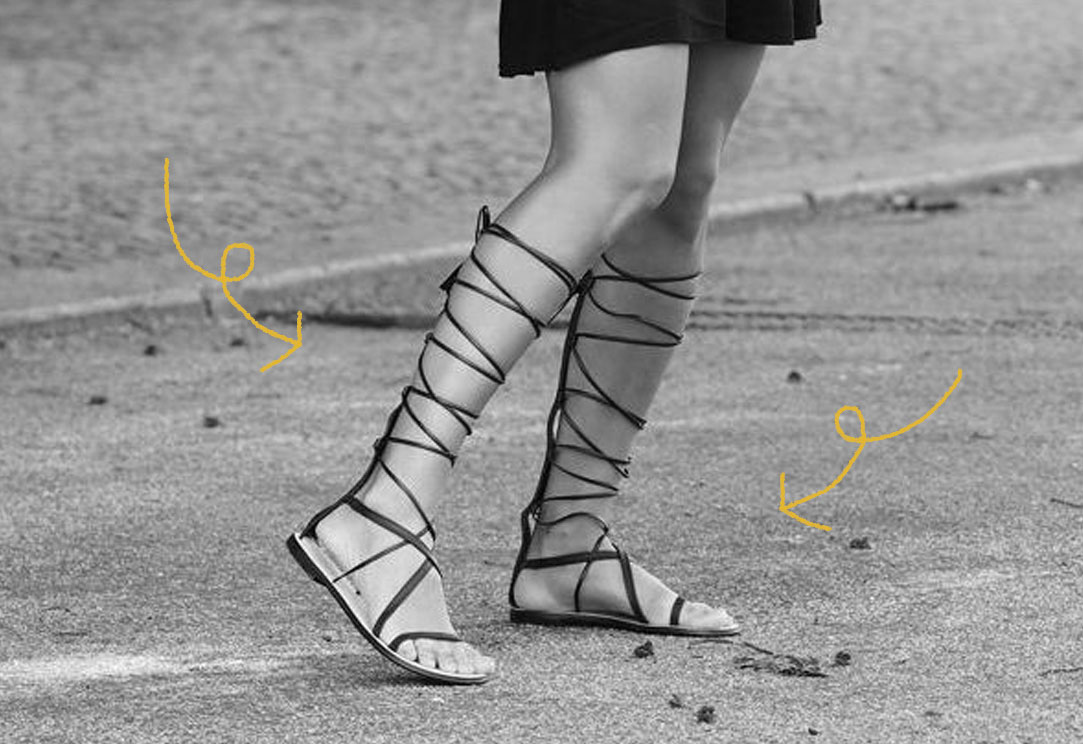Gladiator sandals have their roots in the ancient world. Between 1000 and 700 BCE, the ancient Greeks began to wear strappy sandals that were often decorated with colorful dyes and rows of amulets. Later, the Romans iterated on the design and created the gladiator sandal. It included metal studs for reinforcement and a sturdy upper. The shoes were often worn by gladiators and soldiers. They were also worn by members of the elite, but it's important to note that they often embellished their sandals with materials that were off-limits to the rest of the population. After the fall of the Roman Empire, the art of sandal making was largely lost. Then in the early 20th century, strappy sandals began popping up, largely as beachwear. Then in the 1960s, gladiator sandals became a type of everyday footwear again for the first time in many centuries. The 1960s version featured bold straps that snaked all the way up the leg, a look that paired perfectly with the mini skirt, which debuted around the same time. The trend was bolstered by a Paco Rabanne spread in a 1968 edition of Vogue that featured gladiator sandals, as well as the fact that trendsetter Patti Boyd was photographed wearing a pair covered in fringe. The shoes remained in style throughout the 1970s, but largely fell out of fashion during the 1980s and 1990s, although some fashion houses did try bringing them back, including Gianni Versace’s 1993 spring collection, which featured many Roman-inspired pieces. In the early 2000s, gladiator sandals made yet another significant fashion comeback. They were often made from leather, linen, or satin, but many designers soon introduced their own 21st century takes on the gladiator sandal by adding features such as heels, metallic finishes, bright colors, and zippers. The gladiator sandal remained a trend throughout the 2010s and is still worn today by those looking to make a statement with their footwear, although it must be noted that the shoes are far less popular than they were during their recent heyday.

Your go-to guide for weird history facts
Subscribe to the FREE daily email that makes learning about history fun.


